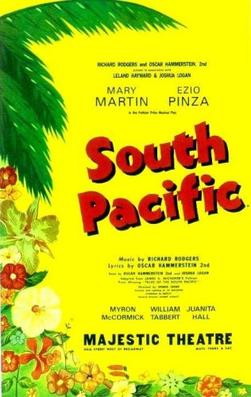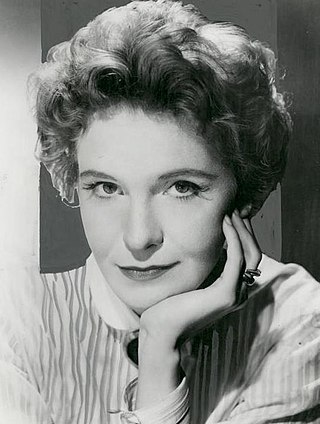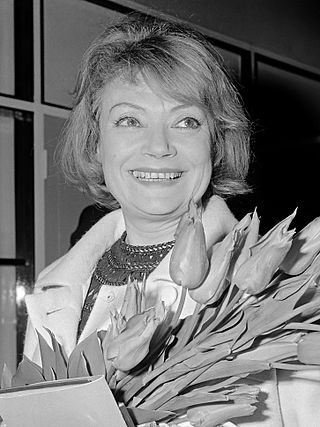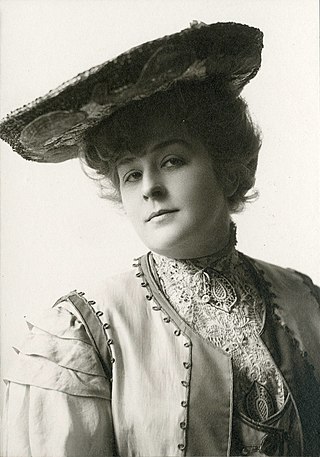
South Pacific is a musical composed by Richard Rodgers, with lyrics by Oscar Hammerstein II and book by Hammerstein and Joshua Logan. The work premiered in 1949 on Broadway and was an immediate hit, running for 1,925 performances. The plot is based on James A. Michener's Pulitzer Prize–winning 1947 book Tales of the South Pacific and combines elements of several of those stories. Rodgers and Hammerstein believed they could write a musical based on Michener's work that would be financially successful and, at the same time, send a strong progressive message on racism.

Geraldine Sue Page was an American actress. With a career which spanned four decades across film, stage, and television, Page was the recipient of numerous accolades, including an Academy Award, a British Academy Film Award, two Primetime Emmy Awards, two Golden Globe Awards, and four nominations for the Tony Award.

Yelizaveta Nikolaevna Kedrova, known as Lila Kedrova, was a Russian-born French actress. She won the Academy Award for Best Supporting Actress for Zorba the Greek (1964), and the Tony Award for Best Performance by a Featured Actress in a Musical for the same role in the musical version of the film.

Albert Herman Woods was a Hungarian-born theatrical producer who spent much of his life in the USA. He produced over 140 plays on Broadway, including some of the most successful shows of the period, sometimes under the name of the production company 'Al Woods Ltd.'. Woods built the Eltinge Theatre on Broadway, named for one of his most successful and profitable stars, the female impersonator Julian Eltinge.

Night of January 16th is a theatrical play by Russian-American author Ayn Rand, inspired by the death of the "Match King", Ivar Kreuger. Set in a courtroom during a murder trial, an unusual feature of the play is that members of the audience are chosen to play the jury. The court hears the case of Karen Andre, a former secretary and lover of businessman Bjorn Faulkner, of whose murder she is accused. The play does not directly portray the events leading to Faulkner's death; instead the jury must rely on character testimony to decide whether Andre is guilty. The play's ending depends on the verdict. Rand's intention was to dramatize a conflict between individualism and conformity, with the jury's verdict revealing which viewpoint they preferred.

Lilyan Tashman was an American actress. Tashman was best known for her supporting roles as tongue-in-cheek villainesses or playing the vindictive "other woman". She made 66 films over the course of her Hollywood career, and although she never obtained superstar status, her cinematic performances are described as "sharp, clever and have aged little over the decades."

Lilli Palmer was a German actress and writer. After beginning her career in British films in the 1930s, she would later transition to major Hollywood productions, earning a Golden Globe Award nomination for her performance in But Not for Me (1959).

Margaret De Wolfe Wycherly was an English stage and film actress. She spent many years in the United States and is best remembered for her Broadway roles and Hollywood character parts. On screen she played mother to Gary Cooper and James Cagney.

Madge Evans was an American stage and film actress. She began her career as a child performer and model.

Owen Gould Davis was an American dramatist known for writing more than 200 plays and having most produced. In 1919, he became the first elected president of the Dramatists Guild of America. He received the 1923 Pulitzer Prize for Drama for his play Icebound, His plays and scripts included works for radio and film.
The Trial of Mary Dugan is a play written by Bayard Veiller.

Jennie is a musical with a book by Arnold Schulman, music by Arthur Schwartz, and lyrics by Howard Dietz, and starred Mary Martin.

Amelia Swilley Bingham was an American actress from Hicksville, Ohio. Her Broadway career extended from 1896 until 1926.

Trelawny of the "Wells" is an 1898 comic play by Arthur Wing Pinero. It tells the story of a theatre star who attempts to give up the stage for love, but is unable to fit into conventional society.

Charlotte Blair Parker was an American playwright and actress in the late 19th and early 20th centuries. She began her theatrical career as an actress, eventually playing opposite John Edward McCullough, Mary Anderson, and Dion Boucicault. Writing under the pen name Lottie Blair Parker, she wrote about a dozen produced plays but is remembered most for three popular stage plays produced between 1897 and 1906: Way Down East, Under Southern Skies and The Redemption of David Corson. Of the three, Way Down East, produced in 1898, was the most successful, proving to be one of the most popular American plays of its time, steadily performed for two decades.

Edna Luby was an American actress and comedian. She acted on stage and in silent films and performed in vaudeville as a celebrity impersonator. Luby was the niece of Sigmund Lubin, a pioneer film producer.

The Blue Flame is a four-act play written by George V. Hobart and John Willard, who revised an earlier version by Leta Vance Nicholson. In 1920, producer Albert H. Woods staged the play on Broadway and on tour across the United States. Ruth Gordon, the main character, is a religious young woman who dies and is revived by her scientist fiancé as a soulless femme fatale. She seduces several men and involves them in crimes, including drug use and murder. In the final act, her death and resurrection are revealed to be a dream. The production starred Theda Bara, a popular silent film actress who was known for playing similar roles in movies.

Nellie, the Beautiful Cloak Model is a 1924 American silent drama film directed by Emmett J. Flynn and starring Claire Windsor. Produced and distributed by Goldwyn Pictures, the film is based on a play by Owen Davis, which premiered on Broadway in 1906.
Les Dominos roses is a three-act farce by Alfred Delacour and Alfred Hennequin. It concerns a plan by two wives to test their husbands' fidelity. At a masked ball at the Paris Opéra, each wife disguises herself in a pink domino – a hooded cloak with a mask – to woo the other's husband.

Betsy Ann Hisle was an American child actress. She is best known for appearing in Nellie, the Beautiful Cloak Model (1924), The Way of All Flesh (1927) and Sorrell and Son (1927).



















